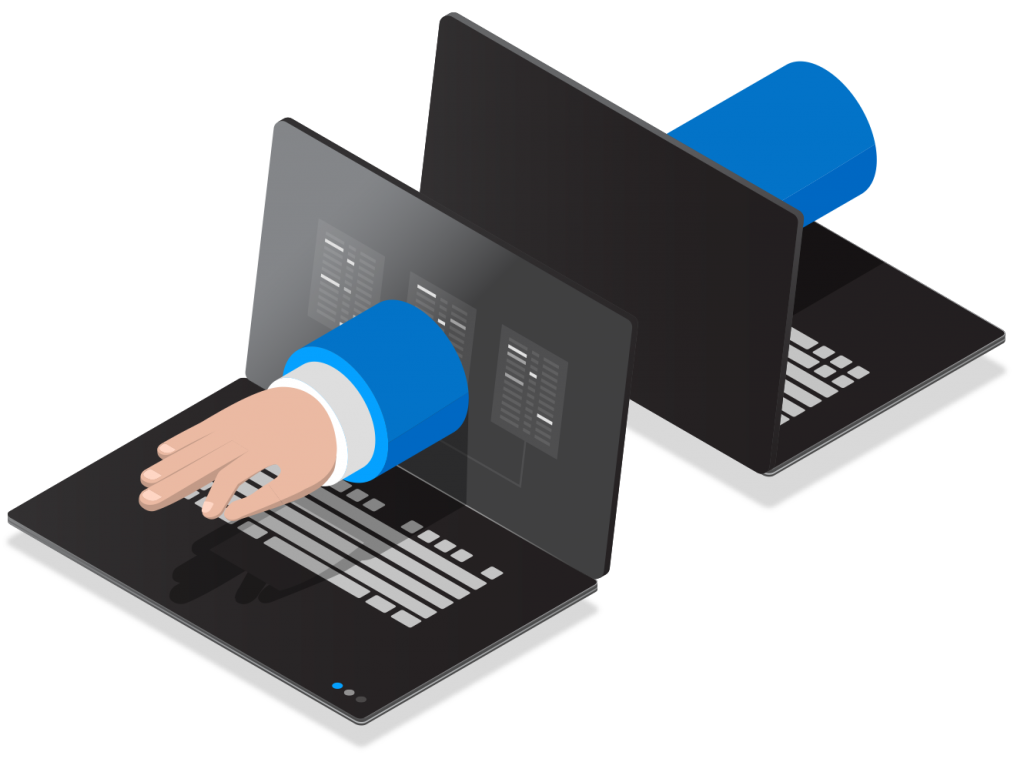Keep employees safe while they’re working from home
For many people, kitchen and dining room tables have transformed into home workstations during the COVID-19 pandemic. For most, working remotely – also referred to as telecommuting or teleworking – on a regular basis has been a new experience.
Results of a survey conducted in March by software company Wrike, which sampled 1,000 workers from organizations with at least 200 employees, showed that nearly half (49%) of the respondents had never worked from home. Another 23% said they had done so only under certain circumstances, such as during severe weather or while caring for a sick loved one.
Findings from the Bureau of Labor Statistics’ American Time Use Survey, with an average annual sample size of 26,400 households, supports those results. The most recent survey, conducted in 2018, showed that 24% of employees performed some or all of their work at home – a percentage that has remained steady since 2009.

Even under normal circumstances, managing the safety of remote employees has at least one obvious limitation: They’re out of sight.
OSHA doesn’t require employers to inspect home offices, according to a February 2000 directive. Most, if not all, employers may be reluctant to do so anyway because of privacy concerns. The agency states in the directive that respecting the “privacy of the home” is why such inspections have never been conducted. Exceptions, however, can be made for “home-based worksites,” such as manufacturing operations, under certain circumstances. OSHA notes that it will respond to a complaint or referral only if a violation of one of its standards “threatens physical harm” or if any imminent danger exists, including a work-related death.
This means the onus typically is on remote workers to manage their own safety.
Put it in writing
So, what can employers do to help? For one, setting expectations and requirements in a signed document.
According to Telework.gov, the federal government’s Office of Personnel Management requires the use of signed, written telework agreements per the Telework Enhancement Act of 2010. The agreements include a 34-point safety checklist covering ergonomics, fire safety and electrical safety, among other topics.
Safety is the first topic addressed in the Commonwealth of Virginia’s telework agreement, and commonwealth employees must complete and sign a safety checklist.
Helpful resources
Examples of telework policies are available from the Virginia Department of Rail and Public Transportation at teleworkva.org. Among the department’s resources are advice on safety and liability policies as well as a safety checklist.
Among the items on the checklist is ensuring electrical equipment is “free of recognized hazards that could cause physical harm,” including loose fixtures or frayed wires. Remote employees also must make sure items such as electrical cords and surge protectors are secured under a desk or along a baseboard, and they must arrange any file cabinets and storage closets so they don’t open into a walkway.
The agreement also includes provisions for reporting and investigating injuries.
“[Safety’s] a huge focus for us,” said Emily Elliott, director of the commonwealth’s Department of Human Resource Management. “Productivity is important, but the conversation is always about workforce safety.”
The commonwealth was featured in recent Forbes’ lists of the top 100 employers for remote work, as was the American Heart Association.
Around one-quarter of the association’s workforce was fully remote before the pandemic began, according to AHA’s Chief Administrative Officer Larry Cannon, who estimated that another quarter spent at least two days a week outside of a traditional office.

Cannon said AHA’s remote work policy is intended to be comprehensive, covering topics such as workstation setup, ergonomics and eye care. The guidelines are reviewed periodically for safety and relevance.
AHA uses its HeartU learning platform – featuring more than 125 safety-specific resources – as an added measure to help employees working remotely. The association also emphasizes exercise, stretching, mindfulness/resiliency and stress management techniques.
AHA’s approach to remote work “helps us recruit and retain the best talent, focusing on work outputs rather than micromanaging their presence in a brick-and-mortar office,” Cannon said.
Written acknowledgement of a policy also is important to avoid liability or workers’ compensation claims, according to an April 2017 article published on the Society for Human Resource Management’s website. The article advises employers to review their workers’ comp insurance to ensure it covers remote employees.
Remote workers’ recordables
When is a remote employee’s injury or illness considered work-related and recordable? According to OSHA regulation 1904.5(b)(7), the injury or illness must be “directly related to the performance of work rather than to the general home environment or setting.” For example, if a remote employee drops a box of work documents on his or her foot and injures it, the injury is work-related. However, if an employee trips over a family pet while rushing to answer a work call, the injury isn’t work-related.
Communication is key
Getting employees involved in formulating telework policies and creating an open dialogue about potential changes can be mutually beneficial, noted Phyllis Hartman, owner of PGHR Consulting Inc. and a former HR director in manufacturing with safety management responsibilities.
“When they’re involved in helping make decisions, they’re more likely to follow the practices,” she said.
One way employees can communicate issues, even passively, is via computer programs that allow for ergonomics self-assessment, pointed out Karen Loesing, owner of The Ergonomic Expert, a Los Angeles-area consulting firm. Programs can include questions that may help determine symptoms of an issue or a way to report any problems directly.
Loesing said some employers may have a consultant on call if a remote worker needs help with an issue or a more thorough ergonomic assessment.
Hartman said employers might ask remote workers to take pictures of their workstations as part of their policies. This can serve as one way for organizations to reemphasize the importance of safety for those working away from the office.
An SHRM article published in March advises employers to check in with remote employees periodically, no matter how much experience employees have working remotely.
“What gets talked about gets done,” Hartman said. “And so if you just tell them once, ‘You’ve got to be safe,’ and then you never ask about it again, it’s easy for them to forget too. Regularly reminding them or asking makes a difference, and that’s true in terms of any employee communication. The key is to communicate consistently and often.”

Another key is educating remote employees about why they’re required to fill out a checklist or answer questions about ergonomics.
“What’s important to an employee is that you care about them,” Hartman said, “and that’s often more important than anything else. So it’s communicating in a way that emphasizes the fact that we want you to be safe.”
‘You can focus on results and getting work done’
With the surge in the number of remote workers during the COVID-19 pandemic, the Commonwealth of Virginia has added online classes to assist its employees new to telework. Topics include those items on its safety checklist and hazards to address in the work area.
Elliott said the commonwealth also focuses on employees’ mental well-being. Programs include confidential health coaching and “Take 10 on Tuesdays,” which offers live relaxation methods via social media.
“I think the leadership here really does value the balance between work and family, and flexibility,” Elliott said. “I think telework is a means of having that flexibility. I think it’s also just the commitment (for the employee) in knowing that you can focus on results and getting work done.”

